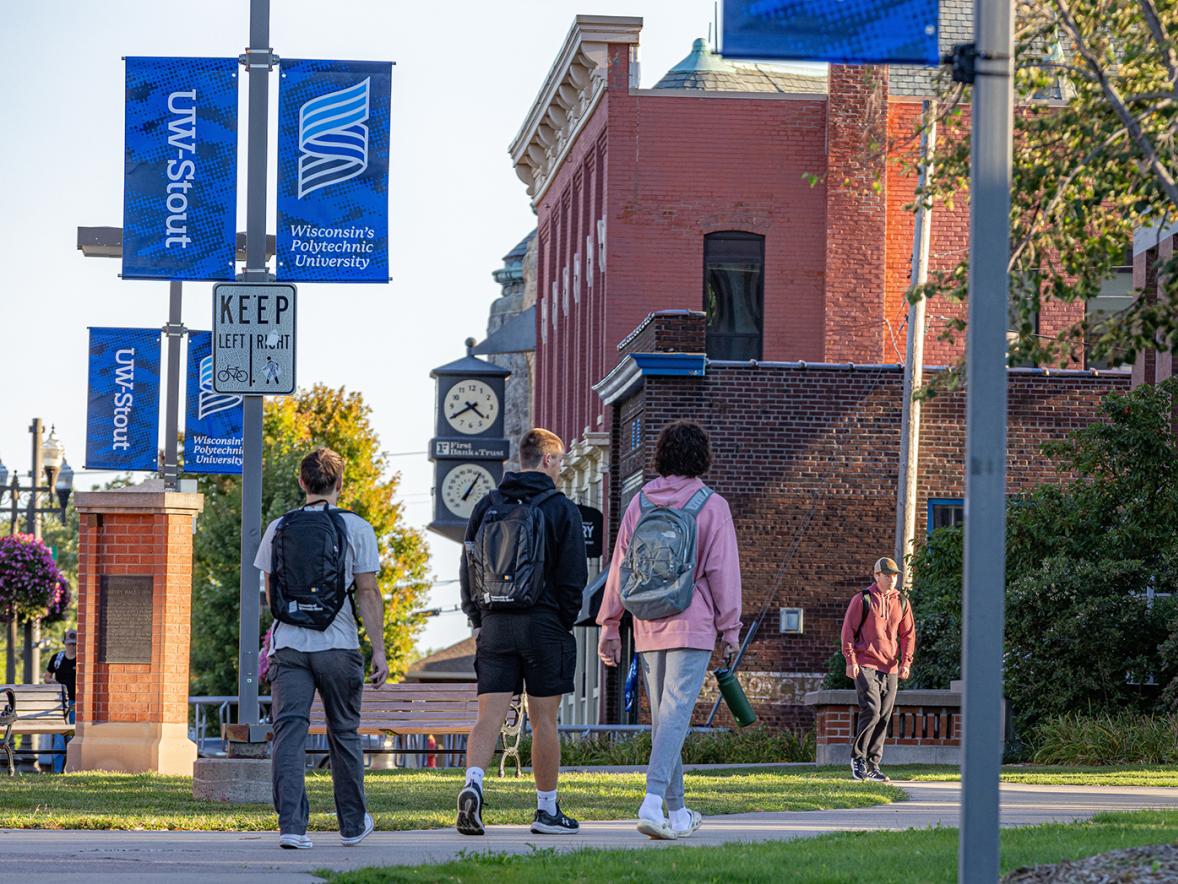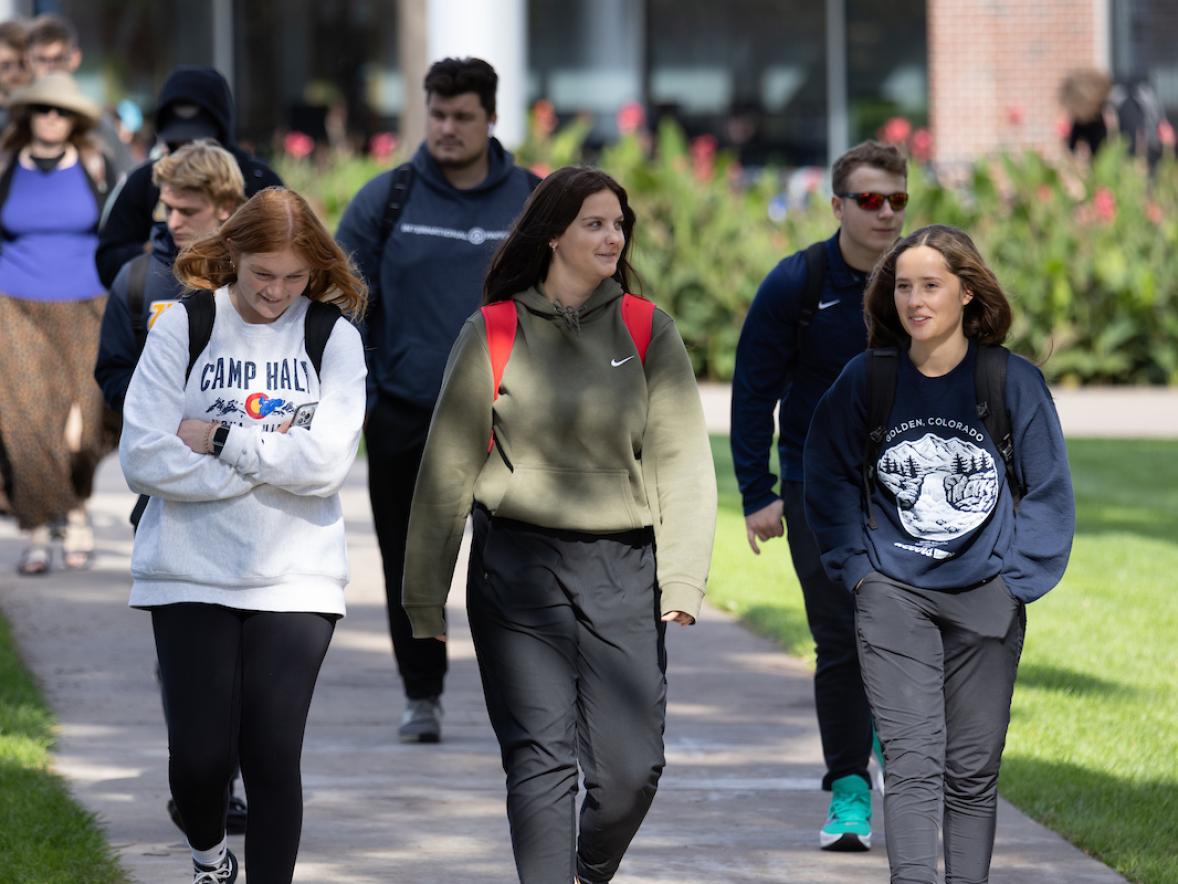Charles W. Sorensen’s tenure as chancellor of University of Wisconsin-Stout will be marked in institution history as a time of strong leadership, historic progress and impressive growth.
Sorensen, who passed away Friday, Feb. 23, in Florida at the age of 77, directed myriad transformative changes while strengthening the university’s historic and core missions of applied learning and career training during his 26 years as chancellor.
He is the longest-serving leader in the 127-year history of UW-Stout. He began serving Aug. 15, 1988. He retired Aug. 15, 2014.
While he was chancellor, the number of academic program offerings more than doubled, with key additions in the areas of engineering, science and art; the physical campus was modernized and grew, with 14 new, expanded and renovated buildings; and the university received national recognition with the Malcolm Baldrige National Quality Award.
“Nothing that has been accomplished during my time here has been done alone; it took working shoulder-to-shoulder with the entire campus community,” Sorensen said in “An Idea Comes of Age: UW-Stout, 1891-2016,” a book that was published for the university’s 125th anniversary. “Surely we have established a clear vision of what this already excellent university can become: a premier polytechnic university.”
The changes that occurred under Sorensen’s leadership cover nearly all aspects of university operations. They included:
Enrollment: It rose from 7,092 in 1988 to 9,349 in 2014, an increase of almost 32 percent.
- Academics: The number of undergraduate majors increased from 20 to 44 and the number of graduate majors from 18 to 23, plus three advanced graduate programs. New majors included the university’s first engineering program and first doctoral program.
- Recognition: UW-Stout was presented the Baldrige award in 2001 by President George W. Bush. In 2007 it was designated as Wisconsin’s Polytechnic University by the UW System.
- Physical campus: Sorensen oversaw construction of five new buildings: North Point Dining and Fitness (2010), the suite-style Red Cedar residence hall (2005), Millennium Hall technology building (2001), 4,500-seat Don and Nona Williams Stadium (2001) and Micheels Hall (1996), a classroom building between Applied Arts and Jarvis Tech Wing. An addition to Jarvis Hall Science Wing, one of the school’s biggest projects ever at $43.2 million, opened in fall 2010. Harvey Hall was renovated for $28 million and reopened in 2016.
- Innovation: The eStout laptop program, which continues today, was implemented in 2002. It provides laptop computers to all undergraduates and remains the foundation for a campuswide digital learning environment.
- Employment success: UW-Stout maintained an employment/continuing education rate for new graduates at or above 97 percent, even during the worst recession since the Great Depression.
- Outreach: UW-Stout opened the Stout Technology and Business Park, Discovery Center, the Center for Applied Ethics and expanded the Cooperative Education Program. When Sorensen retired, Stout Technology and Business Park on Menomonie’s east side employed 1,150 people in 63 companies with about $50 million in payroll and an estimated $232 million economic impact.
- Budget: The university’s annual budget grew from $66 million to $228 million.
- Advancement: Stout University Foundation assets grew from $2.3 million to more than $43 million, including several gifts of $1 million or more. Scholarships awarded annually by the Foundation rose in value from $107,000 in 1988 to more than $600,000.
Native of Iowa; began career as history professor
Sorensen was born Jan. 21, 1941, in Audubon, Iowa. He grew up in Moline, Ill. After attending Black Hawk Community College, he graduated in 1964 from Augustana College, in Rock Island, Ill., with a bachelor’s degree in in history and political science.
He then earned a master’s degree in history in 1967 from Illinois State and a doctorate in American history in 1973 from Michigan State University.
He began teaching in 1970 at Grand Valley State in Allendale, Mich. He eventually was named history department chair, assistant dean and dean. In 1981 he attended Harvard University Institute for Educational Management.
In 1984, Sorensen was named vice president for Academic Affairs at Winona State University in Winona, Minn. While at Winona State, Sorensen pushed for the addition of an engineering degree program.
At UW-Stout, where he was inaugurated May 6, 1989, he also pushed for an engineering degree program, which was coupled with a capital campaign and renovation of Fryklund Hall. After approval from the UW System, the manufacturing engineering program, the first in Wisconsin, was launched in 1994.
UW-Stout has expanded to four engineering programs, adding computer, plastics and mechanical, and in 2017 dedicated the Robert F. Cervenka School of Engineering.
Administratively, Sorensen initiated a new campus governance process in May 1996, the Chancellor’s Advisory Council, which includes representatives from all campus constituencies.
The change was in direct response to severe criticism Sorensen faced that spring about his leadership, leading to a vote of no-confidence by the Faculty Senate. Faculty were especially upset that Sorensen had not vetted a proposal to seek charter school status, meaning UW-Stout would be independent of the UW System and have its own board while still receiving state support.
Also in response to the vote of no confidence, Sorensen created the Office of Budget, Planning and Analysis in 1996 to help provide objective data for campus initiatives and handle capital planning, institutional research and the budget.
As a result of the no-confidence crisis, Sorensen’s decision to delegate power helped UW-Stout emerge as a stronger institution. “We now have systems of leadership distributed among all campus groups. Formal team building is a key component to our leadership system. I relinquished power to gain authority, respect and influence,” he said.
The no-confidence crisis and resulting changes in 1996 led UW-Stout to begin assessing itself using national continuous quality improvement standards, leading to the 2001 Malcolm Baldrige National Quality Award.
###







